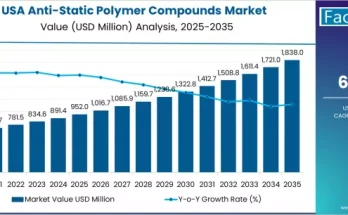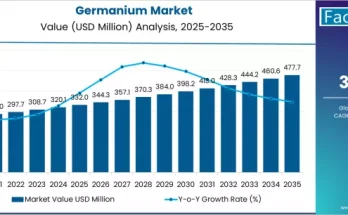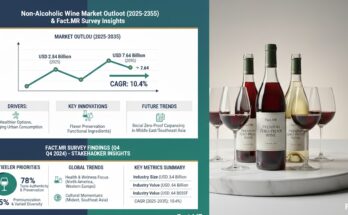The Europe carbon dioxide (CO₂) market is witnessing significant transformation as industries pivot toward sustainability, circular economy practices, and low-carbon innovations. Once regarded primarily as an industrial byproduct, carbon dioxide has evolved into a valuable commodity with applications across diverse sectors — from food and beverages to chemicals, healthcare, and energy. The European market’s focus on decarbonization and carbon capture initiatives is redefining how CO₂ is produced, managed, and utilized within industrial ecosystems.
Market Overview
The carbon dioxide market in Europe is driven by the growing emphasis on carbon neutrality and the rapid integration of clean technologies. CO₂, whether derived from natural sources, fermentation, or industrial processes, serves as a crucial input in several industries. It is used in food processing, carbonation, welding, medical applications, and enhanced oil recovery, among others.
In recent years, the focus has shifted toward sustainable sourcing and the utilization of captured CO₂ to reduce emissions. The development of advanced carbon capture, utilization, and storage (CCUS) technologies has transformed carbon dioxide from an environmental concern into an economic opportunity. These innovations enable industries to capture CO₂ emissions from manufacturing plants and power facilities, converting them into valuable raw materials for industrial use.
Moreover, the market is influenced by stringent European Union climate policies and initiatives aimed at achieving net-zero emissions. These frameworks are encouraging companies to adopt innovative carbon management strategies, fostering a new era of environmental accountability and technological advancement.
Regional Insights
Europe stands at the forefront of global carbon dioxide management, driven by strong environmental regulations, public awareness, and industrial innovation.
Western Europe maintains a dominant position, supported by well-established industrial infrastructures and robust government initiatives promoting carbon capture and reuse. Countries such as Germany, France, and the United Kingdom have been early adopters of sustainable CO₂ solutions, focusing on energy transition and emission reduction.
Northern and Central Europe are increasingly investing in CO₂-based technologies, particularly for the energy, agriculture, and healthcare sectors. These regions are focusing on integrating renewable energy sources with carbon utilization frameworks, paving the way for green industrial production.
Meanwhile, Southern and Eastern Europe are emerging as fast-growing markets, driven by expanding manufacturing sectors and increasing alignment with EU environmental directives. Governments and private enterprises are collaborating to develop CO₂ infrastructure, optimize production facilities, and encourage innovation in low-emission manufacturing.
This regional dynamism highlights Europe’s holistic approach — balancing industrial growth with environmental stewardship, and innovation with regulatory compliance.
Key Trends & Forecast
The Europe carbon dioxide market is evolving rapidly, shaped by several technological and policy-driven trends that define its future outlook.
- Carbon Capture and Utilization Expansion: With CCUS technologies gaining traction, industries are increasingly converting captured CO₂ into usable products such as fuels, polymers, and construction materials, supporting the circular economy.
- Green Hydrogen and CO₂ Integration: As hydrogen becomes a central pillar of Europe’s energy transition, captured carbon dioxide is being used in the synthesis of e-fuels and sustainable chemicals.
- Food and Beverage Industry Innovation: Beverage carbonation and food preservation continue to drive demand, with companies emphasizing purity, safety, and sustainability in CO₂ sourcing.
- Medical and Pharmaceutical Applications: The healthcare sector utilizes CO₂ in respiratory therapies, cryogenic applications, and laboratory processes, ensuring consistency and reliability in medical operations.
- Growing Use in Agriculture: Controlled atmosphere storage and greenhouse applications of CO₂ are enabling improved crop yields and extended shelf life for perishable goods.
- Policy-Driven Market Realignment: The European Green Deal and various national climate strategies are promoting the use of captured carbon, incentivizing low-emission industries, and encouraging cross-border carbon transport networks.
Collectively, these trends underscore how the CO₂ market is transitioning from being emissions-focused to value-creation-oriented, supporting both environmental and economic goals.
Applications & End-Use Outlook
Carbon dioxide serves as a critical component across a wide range of industries that rely on efficiency, precision, and safety.
- Food & Beverage Industry: One of the largest consumers of CO₂, this sector uses it for carbonation, packaging, chilling, and preservation to enhance product quality and shelf stability.
- Chemical and Industrial Manufacturing: CO₂ is used as a feedstock for producing chemicals, plastics, and fuels, reducing dependence on fossil-based raw materials.
- Healthcare & Pharmaceuticals: From medical-grade CO₂ used in surgeries to sterilization processes and cryotherapy, its role in healthcare remains indispensable.
- Energy Sector: The gas is employed in enhanced oil recovery and in various energy transition processes, particularly in synthetic fuel production.
- Agriculture: Controlled CO₂ environments enhance plant growth and improve agricultural productivity, supporting sustainable farming practices.
- Metal Fabrication and Welding: In welding processes, CO₂ acts as a shielding gas to prevent oxidation and ensure high-quality joints.
These applications collectively highlight CO₂’s versatility and growing relevance in Europe’s industrial framework, aligning with the continent’s vision for a greener, more efficient economy.
Conclusion
The Europe carbon dioxide market stands as a testament to how innovation and regulation can work together to transform industrial landscapes. From waste emissions to valuable resources, CO₂ has become a cornerstone of sustainability-driven growth. As industries continue to adopt circular economy models, the strategic management of carbon dioxide will play a pivotal role in achieving long-term environmental and economic resilience.
By embracing technological advancements, strengthening policy frameworks, and fostering public-private collaborations, Europe is setting a global precedent in responsible carbon management. For organizations looking to align with the region’s sustainability vision, in-depth market insights can serve as a valuable resource for navigating the evolving landscape of carbon dioxide utilization.
Browse Full Report – https://www.factmr.com/report/europe-carbon-dioxide-market



